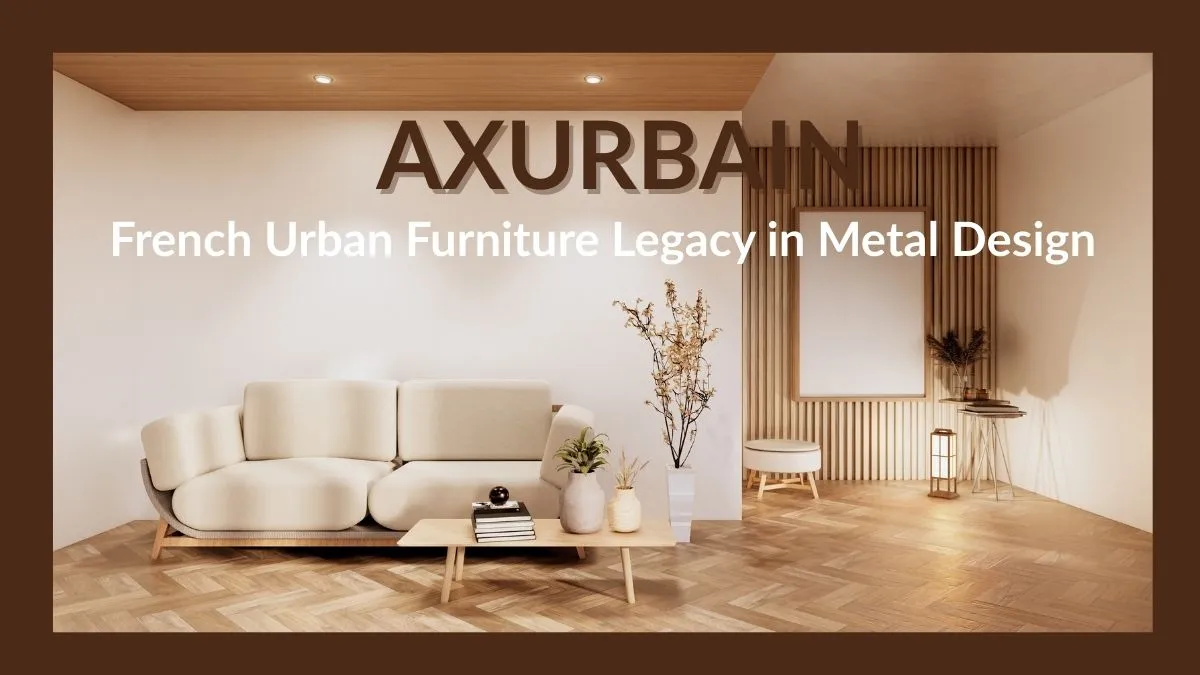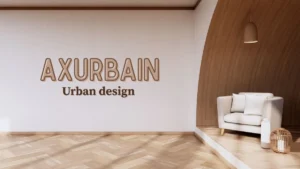GENERAL
Axurbain: French Urban Furniture Legacy in Metal Design

Axurbain was a French metal processing company founded in 2001 in Fabrègues, specializing in the design and manufacture of high-end urban furniture. Known for its innovative benches, planters, barriers, and outdoor installations, it combined modern aesthetics with durable craftsmanship to enhance public spaces across France. In December 2023, the company was dissolved through a merger and absorbed into Agora Mobilier Urbain, ensuring the continuation of its expertise and product lines under a larger industry brand.
The Founding of Axurbain in Fabrègues
Axurbain was founded in 2001 in Fabrègues, a town in southern France, with a vision to combine durable metal craftsmanship and innovative design for public spaces. From the start, the company positioned itself as more than just a manufacturer, aiming to enhance urban life through aesthetic, functional, and long-lasting furniture. By working closely with municipalities and architects, urban furniture design quickly gained recognition for creating benches, barriers, and planters that seamlessly blended practicality with modern urban identity.
Philosophy of Design
At the heart of Axurbain’s operations was a commitment to functional aesthetics. The company’s guiding philosophy rested on three core principles:
- Durability: Every product was engineered to withstand the demands of urban life, from heavy use to exposure to the elements.
- Innovation: It embraced modern techniques in metalworking and surface treatment, allowing it to explore creative shapes and finishes uncommon in traditional street furniture.
- Integration with Urban Identity: Rather than imposing generic designs, urban furniture design strove to create elements that blended seamlessly into their environments, respecting local architecture and cultural heritage.
Core Specializations
1. Urban Benches
Benches were one of Axurbain’s signature products. Crafted primarily in steel and aluminum, their designs balanced ergonomic comfort with visual elegance. The company’s benches often integrated subtle curves, minimalist lines, and durable finishes capable of withstanding harsh weather conditions, ensuring longevity in public use.
2. Barriers and Bollards
In cities where pedestrian safety and traffic management are essential, urban furniture design developed barriers and bollards that combined structural strength with sleek design. Instead of bulky, utilitarian forms, the company created visually cohesive elements that blended into urban architecture while maintaining security functions.
3. Planters and Green Features
It also contributed to the greening of public spaces through metal planters and modular planting systems. These installations allowed urban planners to integrate greenery into plazas, walkways, and public squares, enhancing both environmental sustainability and community well-being.
Collaborations and Clientele
Over the years, Axurbain worked closely with municipal governments, landscape architects, and urban planners throughout France. Its portfolio included projects in both modern urban centers and historical towns, demonstrating its versatility across diverse architectural contexts. Municipalities often turned to urban furniture design for signature design projects, particularly when seeking to revitalize town centers or create cohesive identities for public spaces.

Metal Craftsmanship and Innovation
A key factor in Axurbain’s success was its deep expertise in metal processing. Its workshops in Fabrègues employed skilled artisans and engineers who specialized in:
- Precision cutting and welding of steel and aluminum
- Powder coating and protective finishes for weather resistance
- Innovative modular designs allow easy installation and maintenance
Contribution to French Urban Aesthetics
The impact of urban furniture design work extended beyond functionality. Its installations played a role in shaping the visual character of French public spaces. For example:
- In contemporary city districts, sleek benches and barriers contributed to a modern metropolitan aesthetic.
- In historical quarters, carefully designed bollards and planters complemented heritage architecture without clashing with the past.
- In parks and community squares, urban furniture design planters helped create green oases, supporting France’s growing emphasis on sustainable urban planning.
Dissolution and Merger with Agora Mobilier Urbain
After more than two decades of independent operation, December 2023 marked a turning point. Axurbain was formally dissolved and absorbed into Agora Mobilier Urbain, a larger and more established company in the same industry group. The merger was not a disappearance but rather a strategic consolidation. By integrating into Agora, Axurbain’s designs, techniques, and intellectual property were preserved and positioned for broader development under a larger brand umbrella.
Agora Mobilier Urbain: Continuing the Legacy
Agora Mobilier Urbain, recognized as a leading French player in the urban furniture sector, welcomed Axurbain’s expertise into its portfolio. This merger allowed Agora to:
- Expand its product offerings with Axurbain’s established designs
- Integrate skilled artisans and engineers into its workforce
- Strengthen its reputation as a one-stop solution for municipalities and architects seeking both creativity and durability in urban furniture
The Broader Context of Urban Furniture in France
To fully appreciate Axurbain’s role, it is worth considering the larger industry trends:
- Sustainability: French municipalities increasingly prioritize eco-friendly materials and processes. Urban furniture design durable, long-lasting products aligned with these goals.
- Customization: Cities seek furniture that reflects local identity rather than standardized forms. Axurbain excelled in this area through bespoke projects.
- Safety and Accessibility: Public spaces must cater to all demographics. urban furniture design, ergonomic and safety-conscious designs supported inclusivity.
FAQs
Q1. What was Axurbain known for?
It was known for designing and manufacturing high-end urban furniture, including benches, barriers, planters, and custom installations, using durable metal craftsmanship.
Q2. Why is Axurbain significant in French design history?
It contributed to the modernization of French cities by combining durable craftsmanship with aesthetics, leaving a lasting mark on public spaces across the country 3.
Q3. Who were Axurbain’s main clients?
Its primary clients included municipalities, architects, and urban planners seeking innovative and aesthetic public space solutions.
Conclusion
The history of Axurbain reflects the broader narrative of urban design in France: the balancing act between tradition and innovation, functionality and aesthetics, individuality and consolidation. Founded in 2001 in Fabrègues, the company reimagined public space equipment, crafting benches, barriers, planters, and custom installations that elevated everyday city life.
-

 BIOGRAPHY7 months ago
BIOGRAPHY7 months agoBehind the Scenes with Sandra Orlow: An Exclusive Interview
-

 HOME1 year ago
HOME1 year agoDiscovering Insights: A Deep Dive into the //vital-mag.net blog
-

 HOME1 year ago
HOME1 year agoSifangds in Action: Real-Life Applications and Success Stories
-

 BIOGRAPHY1 year ago
BIOGRAPHY1 year agoThe Woman Behind the Comedian: Meet Andrew Santino Wife




























